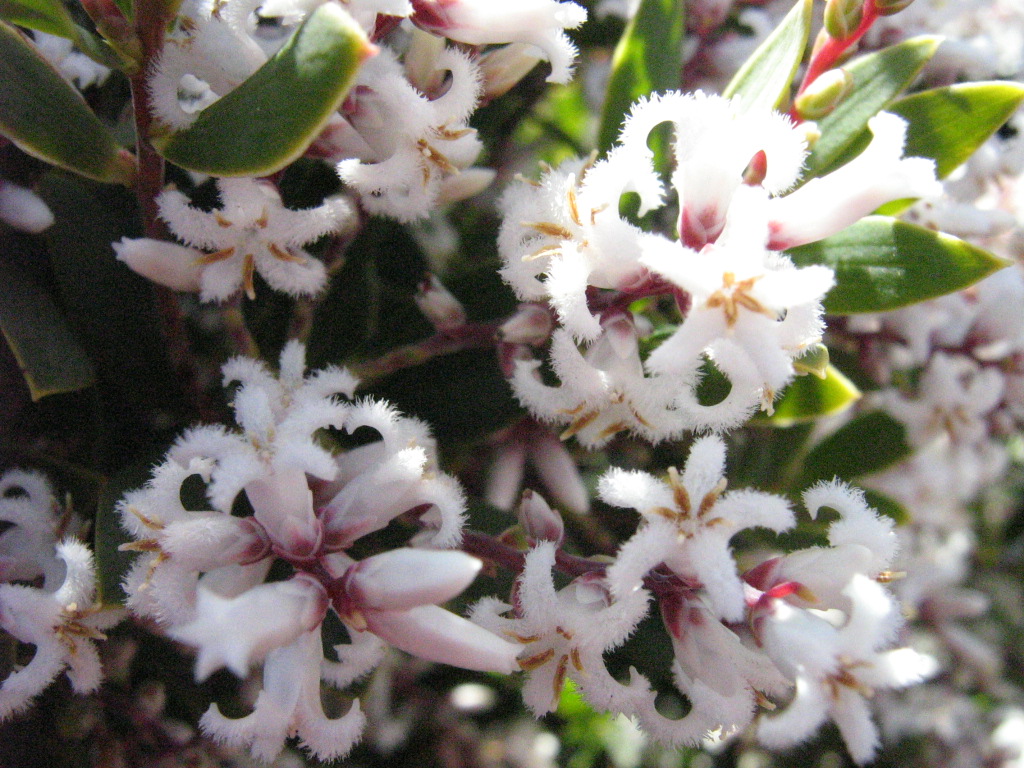Scientific Name: Leucopogon parviflorus
Common Name: coast beardheath
Family Classification (Clade): Eudicots
Family: Ericaceae
Form Description: Much-branches shrub or small tree.
Height (m): 2 – 4
Flowers: White, in numerous straight, close spikes covered densely with white hairs. Buds pinkish.
Fruit: Drupe – cream, waxy. Turn from green to translucent white when ripe.
Municipality
Plant Communities
Habitat Notes
Widespread and abundant on sandy coasts.
Site Tolerance
Dry, Exposed, Moist, Windy
Soil Tolerance
Loam, Nutrient-poor, Sandy, Well-drained
General Notes
Not easily maintained in cultivation. It is suggested that most species require a well-drained, well-composted soil with cool root run provided by large flat stones or a thick mulch. Some shade is also considered beneficial. Bird attracting.
Propagation Calendar
-
Flowering Month
Jan Feb Mar Apr May Jun Jul Aug Sep Oct Nov Dec -
Seed Collecting Month
Jan Feb Mar Apr May Jun Jul Aug Sep Oct Nov Dec -
Sowing Month
Jan Feb Mar Apr May Jun Jul Aug Sep Oct Nov Dec -
Cutting Month
Jan Feb Mar Apr May Jun Jul Aug Sep Oct Nov Dec
Propagation Method
Seed Information
Seed Treatment Method
Storage Stratification at 3-5°C for up to 3 months may improve results. Place seed in a damp medium, lightly covered. Put moist seeds in a plastic bag and store in the fridge.
Seed Treatment Notes
Poor results from untreated seed. Storage in dark place for 3-6 months may promote germination. Sow in soil from under parent plant. Some success also with bird-ingested seed. Germination time can be reduced with stratification.
Germination Time
3-18 months
Cutting & Division Information
Usually grown from cuttings. The percentage strike is generally low and the roots that are formed are very fine and easily damaged in repotting operations.

